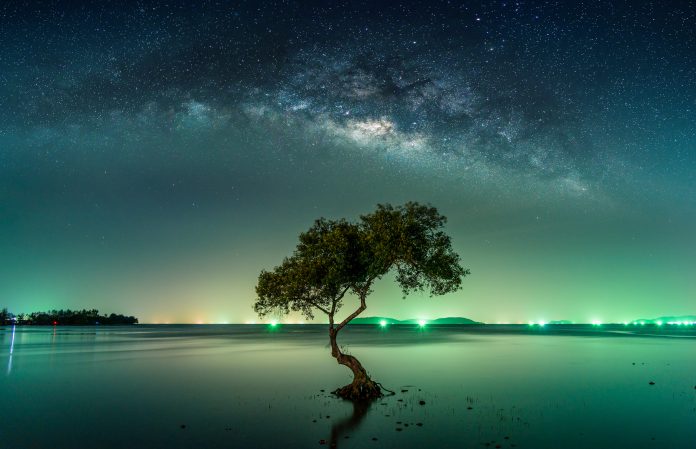Here, we unveil the sterling efforts of the National Science Foundation to further astronomical sciences in the U.S.
Astronomical Sciences (AST) is a branch of the U.S National Science Foundation (NSF) focusing on funding and supporting scientists doing basic research within the fields of astronomy and astronomical sciences. The NSF was created in 1950 by congress as they stated that this type of support is a primary driver of the U.S. economy. It also vastly enhances the security of the U.S. and advances knowledge that sustains global leadership in the sciences.
The AST is part of the Directorate for Mathematical and Physical Sciences (MPS)- another branch of the NSF. Other divisions include the Divisions of Chemistry, Materials Research, Mathematical Sciences, and Physics. These agencies often collaborate to achieve their set mission which is “to harness the collective efforts of the mathematical and physical sciences communities to address the most compelling scientific questions, educate the future advanced high-tech workforce, and promote discoveries to meet the needs of the Nation.” (1)
The specific aim of the AST is to provide facilities and funding U.S. astronomical researchers. This is to ensure that U.S. astronomical research is to a high standard and to encourage understanding of the astronomical sciences to members of the public and politicians alike.
“Basic research” is defined by the NST as scientific research that improves or expands upon pre-existing scientific theories. For instance, recent research by the AST has explored Einstein’s 100-year-old theory that light is deflected by “extremely massive objects.” (2)
A team of astronomers funded by the AST discovered that Einstein was correct, stating: “Our observations are consistent with Einstein’s theory of general relativity. However, his theory is definitely showing vulnerability. It cannot fully explain gravity inside a black hole, and at some point we will need to move beyond Einstein’s theory to a more comprehensive theory of gravity that explains what a black hole is.” (3)
As well as testing previous scientific research the AST has also looked into one of the more prominent scientific news stories of this decade. The ‘Oumuamua’ (4) asteroid was the first known interstellar object to visit our solar system and viewed by an NSF funded observatory at the University of Hawaii.
The object had odd and irregular characteristics: it was cigar-shaped and resembled both a comet and an asteroid. This was extremely unusual which led some observers to question whether or not it was an alien spacecraft. However, an international team of astronomers part-supported by the AST provided evidence that this theory was far-fetched.
Scientist Matthew Knight stated:
“We have never seen anything like ‘Oumuamua’ in our solar system. It’s really a mystery still.
“But our preference is to stick with analogs we know, unless or until we find something unique. The alien spacecraft hypothesis is a fun idea, but our analysis suggests there is a whole host of natural phenomena that could explain it.” (5)
Now, the NSF is funding a new telescope called the Large Synoptic Survey Telescope (LSST), which has been designed to detect more objects like the Oumuamua. This telescope will be active by 2022 and is set to be one of their most advanced telescopes yet.
The NSF and AST also built the Green Bank Telescope, which is located in West Virginia and started operating in 2001. The telescope is currently the world’s largest fully steerable radio telescope. However, as of 2016, the telescope is now operated by a partially funded group known as the Green Bank Observatory.
This is because the NSF and AST are gradually decreasing the funding for the Green Bank Telescope from 2016-2019. They are now still involved in the project but supplying less financial support.
References
1 https://www.nsf.gov/mps/about.jsp
2 https://www.nsf.gov/discoveries/disc_summ.jsp?cntn_id=298944&org=AST&from=news
3 https://www.nsf.gov/discoveries/disc_summ.jsp?cntn_id=298944&org=AST&from=news
4 https://www.independent.co.uk/life-style/gadgets-and-tech/news/alien-object-asteroid-nasa-star-milky-way-oumuamua-nearearth-objects-a8066656.html
5 https://www.nsf.gov/discoveries/disc_summ.jsp?cntn_id=298902&org=AST&from=news











